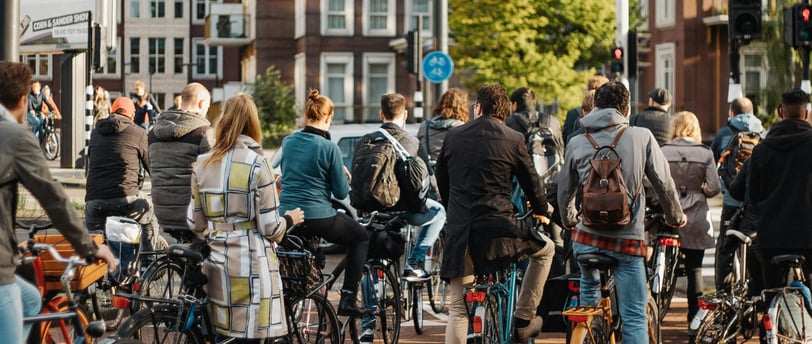Green Urbanism: How Sustainable Design Can Shape the Cities of Tomorrow
SUSTAINABLITY


As cities around the globe grapple with the dual pressures of rapid urbanization and climate change, the concept of green urbanism has emerged as a guiding philosophy for sustainable city development. Green urbanism seeks to harmonize urban growth with environmental stewardship by integrating eco-friendly design, energy-efficient technologies, and community-driven planning.
This article explores the principles of green urbanism, its benefits, and inspiring examples of how cities are shaping a sustainable future.
1. What Is Green Urbanism?
Green urbanism is an approach to urban planning and design that prioritizes environmental sustainability. It envisions cities that:
Reduce Environmental Impact: Minimize energy consumption, pollution, and waste.
Enhance Livability: Foster vibrant, walkable neighborhoods with access to green spaces.
Promote Resilience: Adapt to climate challenges through innovative infrastructure.
Key principles include compact urban design, renewable energy, sustainable transportation, and the integration of nature into urban areas.
2. Core Principles of Green Urbanism
a. Renewable Energy Integration
Cities designed with green urbanism in mind rely on renewable energy sources such as solar, wind, and geothermal power to reduce carbon emissions. Buildings are optimized for energy efficiency through passive design techniques, green roofs, and smart energy systems.
b. Sustainable Transportation
Green urbanism prioritizes low-carbon mobility options:
Public Transit: Expanding efficient and accessible mass transit systems.
Cycling and Walking: Designing pedestrian-friendly streets and dedicated bike lanes.
Electric Vehicles: Building infrastructure to support EVs and car-sharing programs.
c. Circular Resource Management
A circular approach ensures resources are reused and recycled, reducing waste:
Zero Waste Systems: Diverting waste from landfills through composting and recycling.
Water Efficiency: Implementing rainwater harvesting, greywater recycling, and efficient irrigation.
Sustainable Materials: Using recycled and locally sourced materials in construction.
d. Urban Greening
Nature is seamlessly integrated into urban environments through:
Green Spaces: Parks, urban forests, and community gardens enhance biodiversity and public well-being.
Green Roofs and Walls: Vegetated surfaces improve air quality and reduce urban heat.
Restored Ecosystems: Revitalizing rivers, wetlands, and natural habitats within cities.
3. Benefits of Green Urbanism
Green urbanism delivers far-reaching advantages:
Environmental Gains: Reduced emissions, cleaner air, and enhanced biodiversity.
Economic Growth: Job creation in green industries and lower energy costs for residents.
Social Equity: Improved access to housing, transportation, and green spaces for all.
Climate Resilience: Reduced vulnerability to heatwaves, flooding, and other climate impacts.
4. Innovative Examples of Green Urbanism
a. Freiburg, Germany
Freiburg is a global leader in green urbanism:
Energy-Efficient Homes: Passive solar buildings and renewable energy use.
Sustainable Mobility: Extensive cycling networks and low-car neighborhoods.
Green Spaces: Community gardens and forests integrated into the urban fabric.
b. Singapore’s Green Plan
Singapore combines urban density with nature:
Vertical Gardens: Skyscrapers adorned with plants reduce the urban heat island effect.
Stormwater Management: The Bishan-Ang Mo Kio Park integrates flood control with green spaces.
Smart Technologies: Sensors optimize water and energy use across the city.
c. Curitiba, Brazil
Curitiba demonstrates how green urbanism can enhance quality of life:
Innovative Transit: A pioneering bus rapid transit (BRT) system reduces car dependency.
Green Initiatives: Urban parks and reforestation projects combat deforestation.
Recycling Programs: A comprehensive waste management system promotes recycling.
5. Challenges and Solutions
Despite its promise, green urbanism faces several challenges:
High Initial Costs: Sustainable technologies and infrastructure require upfront investment.
Policy and Planning Hurdles: Ineffective regulations and fragmented planning impede progress.
Community Resistance: Lack of awareness or opposition to change can slow adoption.
Solutions include public-private partnerships, community engagement, and aligning urban planning with global sustainability goals like the United Nations’ Sustainable Development Goals (SDGs).
6. The Role of Community in Green Urbanism
Community involvement is crucial for the success of green urbanism:
Participatory Planning: Residents help shape policies and projects to meet local needs.
Education Campaigns: Raising awareness about sustainability fosters support and action.
Local Initiatives: Grassroots projects like urban farming or tree planting strengthen community ties and environmental impact.
7. The Future of Green Urbanism
The future of green urbanism lies in innovation and collaboration:
Smart Cities: Leveraging technology for efficient energy use, water management, and mobility.
Net-Zero Cities: Designing urban environments that produce as much energy as they consume.
Regenerative Design: Moving beyond sustainability to restore and enhance natural ecosystems.
Emerging technologies like artificial intelligence, data analytics, and green construction materials will accelerate the transition to sustainable cities.
Conclusion
Green urbanism is not just a vision for the future; it is a necessity for creating cities that thrive in harmony with the planet. By embracing sustainable design principles and fostering community-driven action, we can build urban environments that prioritize people and the planet.
The cities of tomorrow can be hubs of innovation, resilience, and inclusivity—shaped by the transformative power of green urbanism.

